Peugeot e-Boxer electric van review (2023)
Electric conversion of Peugeot’s large van has some unusual features
PROS
- Up to 154 miles of zero emissions driving
- Cheaper to run than diesel
- Smooth and quiet to drive
- Choice of body sizes
- Choice of battery sizes
CONS
- Expensive to buy
- Limited performance
- Limited payload
- Quirky third-party conversion
- Little standard safety kit
Summary
Peugeot now sells an electric version of every van it makes. Last to join the party is this model, the Peugeot e-Boxer electric van, which is based on the firm’s large diesel van. However, this is quite a different proposition to the e-Partner and e-Expert electric vans.
For rather than being a factory-built effort, the e-Boxer is a third-party conversion, created to fill a gap. As a result, it doesn’t quite meet the polished standards already set by the smaller Peugeot electric vans, which are full factory efforts.
This doesn’t mean the e-Boxer is a bad van. But in common with other large electric vans, its appeal is likely to be more limited. Fewer people will be able to manage using one of these instead of a diesel model, whereas the e-Partner and e-Expert offer a wider spread of acceptability.
What’s unusual about the Peugeot e-Boxer?
The e-Boxer has been developed for Peugeot by UK-based electrification specialist BEDEO. This is the company that used to be known as BD Auto, and it has extensive experience creating electric versions of established vans, all built at its facilities in Turkey.
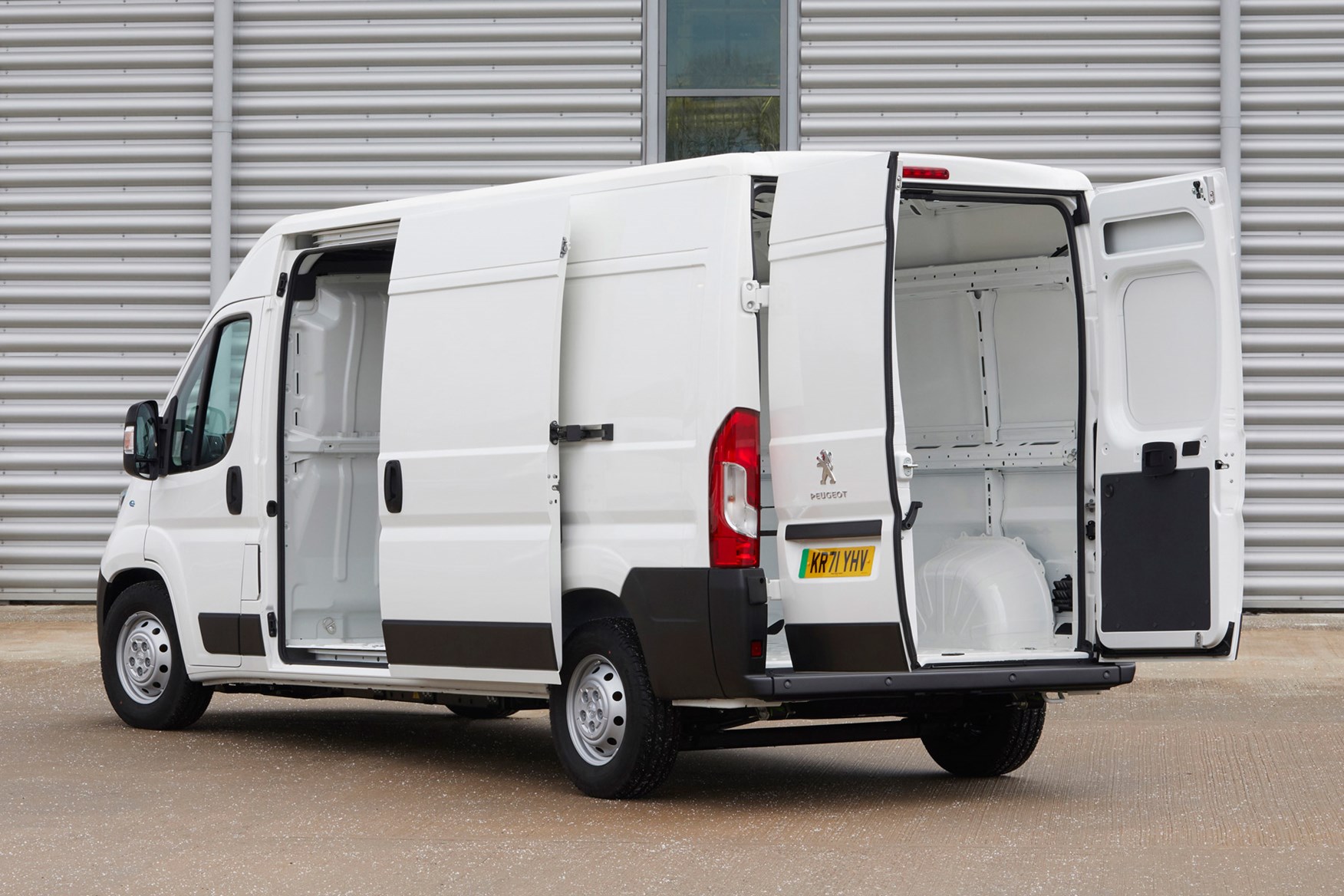
Replacing the regular Peugeot Boxer diesel engine is a 90kW electric motor, powered by a 37kWh or 75kWh battery packs, depending on the size of the van. Some earlier models came with a 70kWh battery, but this was upgraded to the 75kWh version soon after the launch. The batteries are mounted under the floor and have no impact on load space.
So far, so standard for an electric van. Things get a little more unusual inside, where you’ll find push-buttons to control the single-speed gearbox rather than a more conventional lever, and a screen built into a rear view mirror that’s otherwise pointless given most vans are fitted with solid bulkheads.
Some readers will also be taken aback by the instrument cluster – but more on that in the Interior section below.
The performance you can expect from the electric motor also requires careful consideration. More on that in the Driving section.
Driving range and charging time
Claimed driving range for the e-Boxer with the bigger 75kWh battery pack option is 154 miles per charge (an improvement on the 139 miles promised by the 70kWh battery), while the smaller 37kWh battery pack can cover 73 miles per charge. Both figures are WLTP-approved, though you'll likely find real-world mileage to be less, and perhaps dramatically so with a heavy payload and in cold weather.
If you can find a 50kW DC rapid charge point, and don’t mind paying the cost to use it, either battery pack can be charged to 80% in an hour.
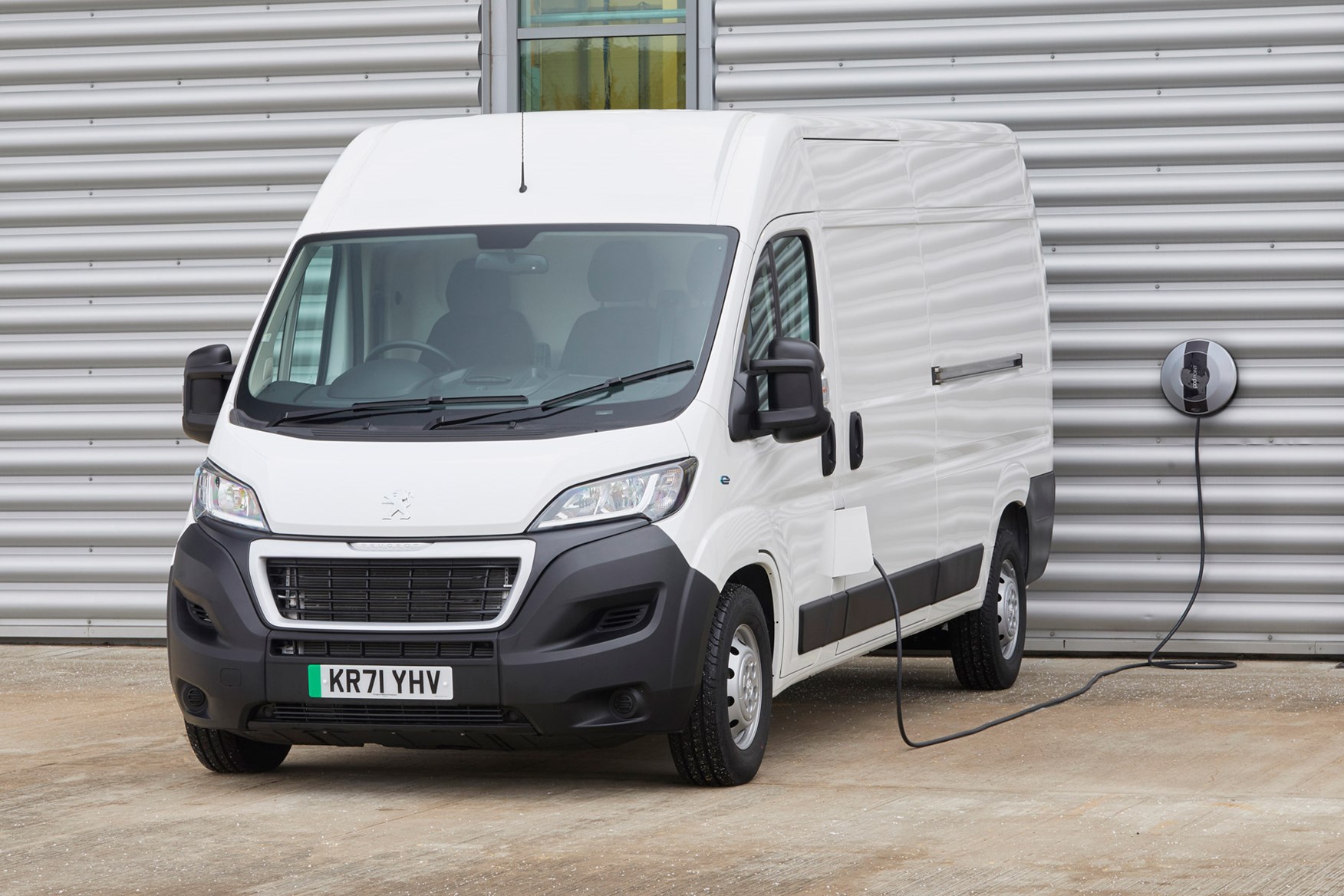
Using a typical 7.4kW Wallbox charger of the kind likely to be installed at homes or workplaces, then you'll need six hours to charge the 37kWh battery pack and 12 hours for the 75kWh versions, though that is 0-100%. The e-Boxer is also compatible with faster 22kW Wallbox chargers which can be installed where a three-phase power supply is available.
Body sizes and variants
In the UK, the e-Boxer can be bought in three lengths - labelled L2, L3 and L4 - and just one roof height (buyers elsewhere get greater choice). The L2 model, which only comes as a panel van, is the only one available with the smaller 37kWh battery pack, all the others are fitted with the 75kWh battery.
Full load area details can be found on our Peugeot e-Boxer dimensions page.
Peugeot e-Boxer rivals
The e-Boxer is also closely related to two other vans – the Citroen e-Relay and Vauxhall Movano-e, which are both also BEDEO conversions.
The Fiat E-Ducato uses the same body structure but different electrification technology, as Fiat builds its own electric models. It also fits bigger batteries, so the E-Ducato can travel further per charge, and offers a wider range of variants. Not to mention much higher payloads of up to 1,885kg; the e-Boxer tops out at 1,150kg
The closest other rival to the e-Boxer is the Renault Master E-Tech (previously known as the Renault Master ZE), which has only a single battery option but also comes in lots of body types. Meanwhile, the Mercedes-Benz eSprinter comes in just a single size in the UK, and has only limited driving range.
Do note that the Ford E-Transit is a much more compelling option, both on paper in terms of pricing and range and in terms of how it drives. It is cheaper, has a longer range and feels like it has been built to the same high standards as the diesel models.
>> Best electric vans you can buy now
Verdict: is the Peugeot e-Boxer any good?
The e-Boxer fills a hole in the Peugeot electric van range, but little more. From our experience so far it lacks performance and finesse while also costing upwards of £50,000.
The business case is limited to people who really need a large electric van for specific, probably urban routes, and are struggling to fulfil fleet order requirements.
Skip to our full verdict on...
- Limited performance
- But quiet and smooth
- Not much regen braking
Usually electric vans give you quite a lively feeling of initial performance, due to the way that electric motors generate all of their torque immediately. This makes most electric vans sprightly at low speeds and away from standstill, useful attributes for vehicles that typically operate in busy towns and cities, even if performance tails off at higher speeds.
The Peugeot e-Boxer isn’t like this. The motor instead seems to have been calibrated to give you quite a gentle feeling response at first, which gradually builds up as you go faster. So once rolling, it’s perfectly adequate, but to begin with it can seem… rather slow.
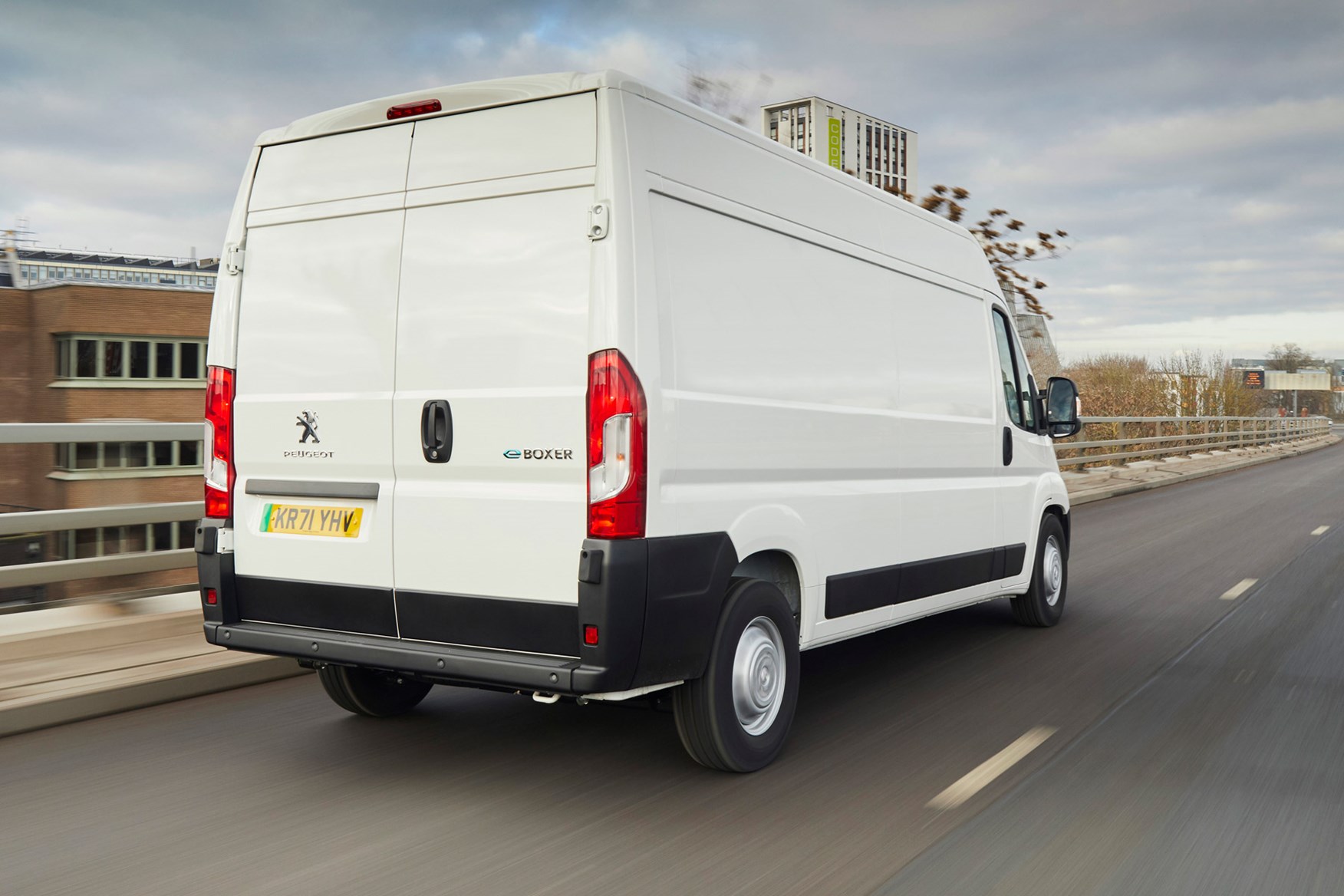
While this might be good news for the life expectancy of the front tyres – like all Boxers, the e-Boxer is front-wheel drive – we found that even when driving an unloaded van, hills had us wishing the vehicle was equipped with a lower gear. Loaded we suspect it will prove almost troublesome, something we hope to test very soon.
Peugeot e-Boxer power and performance
All of this tallies with the electric motor’s on-paper statistics. The 90kW power rating is equivalent to 122hp – about the same as the entry-level 120hp diesel models – but the torque rating is much lower at 260Nm compared with 310Nm for the diesel.
Combine this with the single-speed transmission and limited amount of initial get-up-and-go, and yes, you’ve got a pretty slow van. We suspect painfully slow, if loaded to full capacity.
Top speed for 3,500kg gross vehicle weight (GVW) models is limited to 68mph; the e-Boxer is also available with a 4,000kg GVW rating, limited to 56mph.
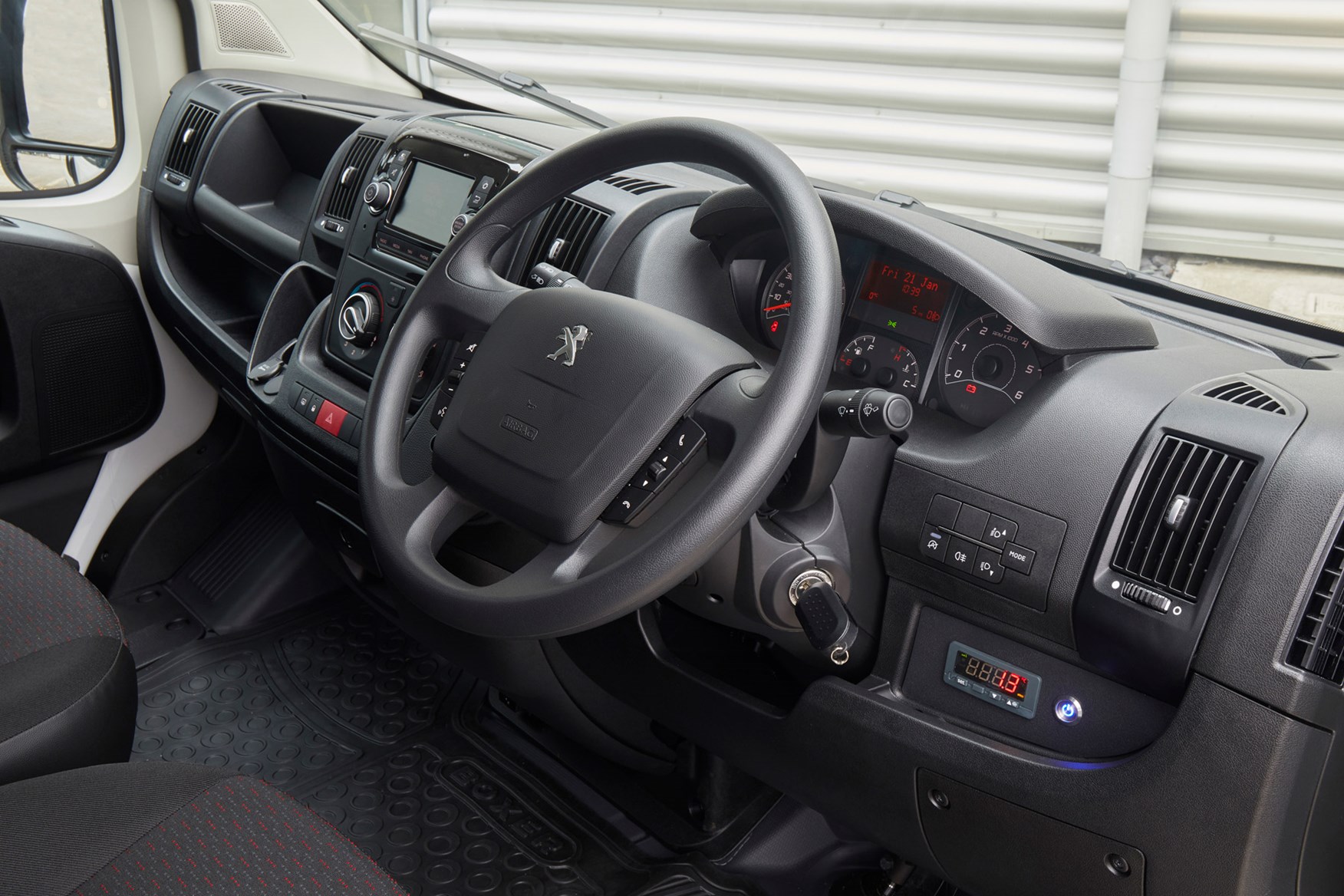
Unlike other electric vans, there’s not a huge amount of regenerative braking when you lift off the accelerator, and no B mode to boost it. So you’ll need to use the conventional brakes more than in most rivals.
On the plus side, the electric motor does make the e-Boxer quiet and smooth. There are no vibrations to speak of, road and wind noise are well suppressed until you reach higher motorway speeds, and the low volume electrical squealing you get from the drivetrain at lower speeds is easily drowned-out by the radio.
The push-button controls for the gearbox may look a little odd, but they are easy to understand and easy to use. And there’s no complicated starting sequence like you’ll find in the E-Ducato – simply turn the key and go.
Peugeot e-Boxer suspension comfort and handling
The e-Boxer’s suspension is firm, which is typical of a large van designed to carry over a tonne of payload. It’s not actually unpleasant, but you’ll feel the bumps. And while it’s also not the sharpest tool in the corners, it doesn’t embarrass itself horribly – body roll isn’t too bad and the e-Boxer doesn’t struggle when tackling a winding country road or busy town centre.
The steering is surprisingly heavy at low speeds, which makes some manoeuvring tiresome. But you don’t need to be going much faster for this to lighten-up. Not that this helps with the driving position…
- Poor driving position
- Instrument panel has shed most of its needles
- Very much a third-party conversion
The interior is where the e-Boxer shows the age of the van it is based on – which goes all the way back to 2006.
The cab is practical enough, with plenty of storage space for odds and sods, but the steering wheel is leaned forward like a bus and you can only adjust it for reach. This is bad news for your wrists over time. The seats are firm and quickly uncomfortable, too, while the touchscreen infotainment system in the centre of the dashboard, which includes sat-nav, is small and fiddly to use.
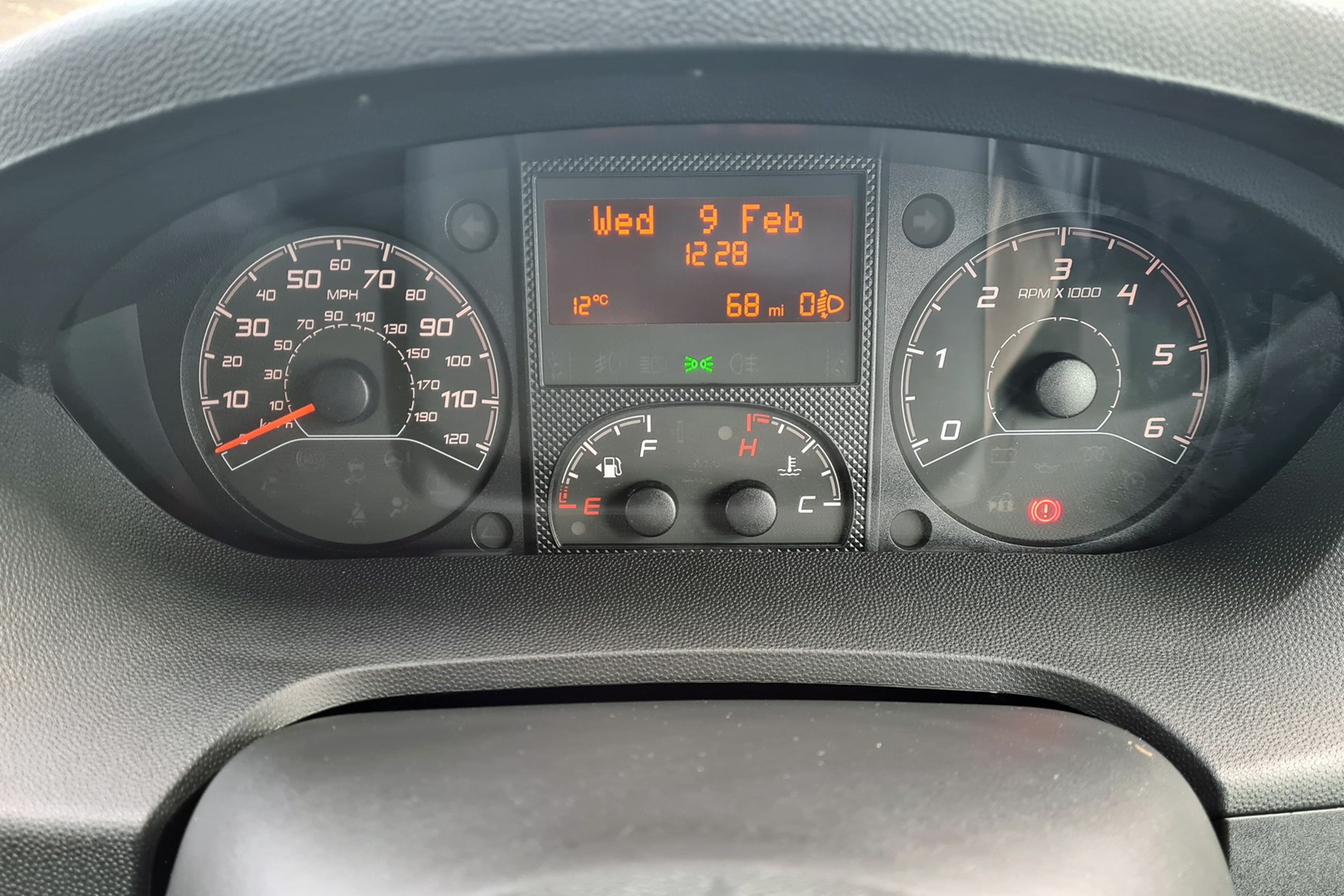
The way BEDEO has converted the standard van’s interior also raises eyebrows.
As a third-party project rather than a factory effort, the e-Boxer doesn’t get a bespoke instrument cluster. Instead, the needles have been removed from the existing rev counter, fuel gauge and temperature gauge – leaving the speedometer as the only functional dial in front of the driver.
All the relevant electric drive info – including battery charge level and remaining driving range – is instead shown in a new digital display incorporated into the rear-view mirror. This is clear enough, albeit a little way out of the driver’s eye-line, but the mirror part makes little sense in a van with a solid bulkhead.
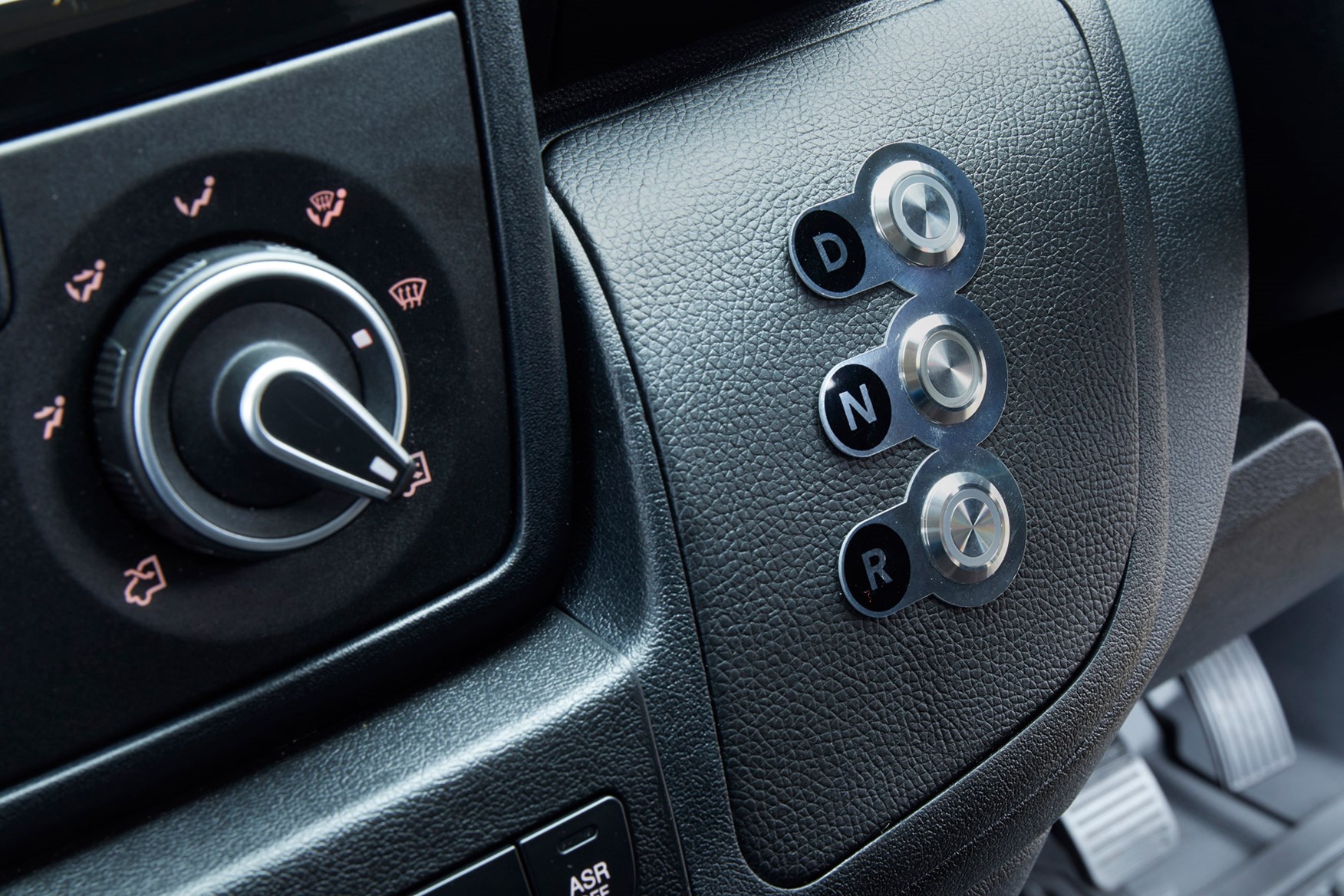
The push-button gear selection is a neat solution, though again, far from what we’d expect from an OEM – which drew some criticism from the team here. Works well enough in practice, which is the main thing.
One further piece of weirdness comes with the ventilation controls. To get any heat you have to turn it on separately from the main ventilation panel – which still controls the fan speed - using a digital panel to the right of the steering wheel.
Probably best to make sure your drivers know this before sending them out on a winter delivery run (though running the heat will also reduce the driving range).
- Cheaper to run than a diesel model
- But more expensive to buy
- Details of standard kit
Rising energy prices have the potential to skew things in the future, but for the moment, the cost-per-mile for electric vans remains cheaper than equivalent diesel models.
And though electric vans cost more to buy outright – the e-Boxer is over £50,000 even at the entry-level – their monthly finance costs are more competitive, while servicing should also be substantially cheaper. The introduction of the larger, 75kWh, battery has also brought about a slight reduction in the price for some models, due to economies made in the manufacturing process. This only applies to the heavier versions, though, and pricing for the lighter models remains unchanged.
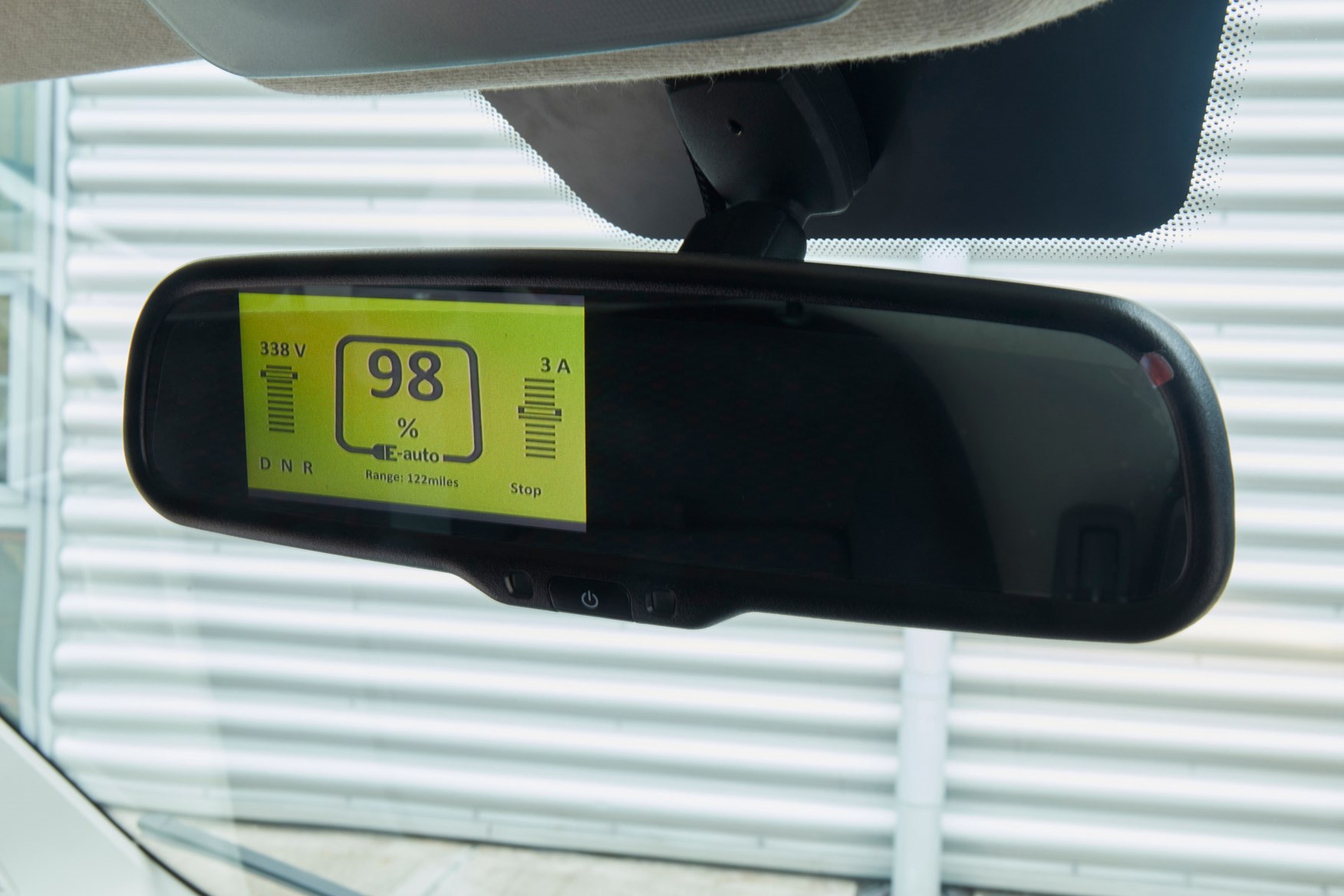
Typically, items such as brake pads wear less, too. Though the lack of substantial regenerative motor braking in the e-Boxer may mean that is not the case here.
Peugeot e-Boxer standard equipment
The e-Boxer comes in Professional trim level only, and includes all of the following standard equipment:
- 5.0-inch touchscreen with DAB radio and satellite-navigation
- Bluetooth and USB connectivity
- Air-conditioning
- Rear parking sensors
- Heated electric mirrors
- Interior rear-view mirror with built-in information display
It’s too early to comment on this. While a third-party conversion of this type is unlikely to have had the same level of testing and development time as a Peugeot factory model, BEDEO has been creating electric van conversions for a long time. So we don’t anticipate any major problems.
If you want to let us know about your experiences owning or operating an e-Boxer, drop us a line via the Parkers feedback email address.
- Very limited safety kit as standard
Not much to say here – the e-Boxer covers the basics but nothing more. So you get an airbag, but key modern safety items such as autonomous emergency braking, blind spot monitors and lane departure warning aren't fitted as standard.
These, and a number of other active driver aids and additional airbags, are available from the options list.
An alarm is fitted as standard on all Boxer Professional grade models and the e-Boxer is no exception.
Which Peugeot Boxer e-Boxer is best for me?
With only a single choice of electric motor, choosing the right Peugeot e-Boxer for you comes down to the driving range you require versus the size of the van you need for the goods you intend to carry.
The most popular model is expected to be the L3H2 panel van variant – the middle of the three lengths available.






















